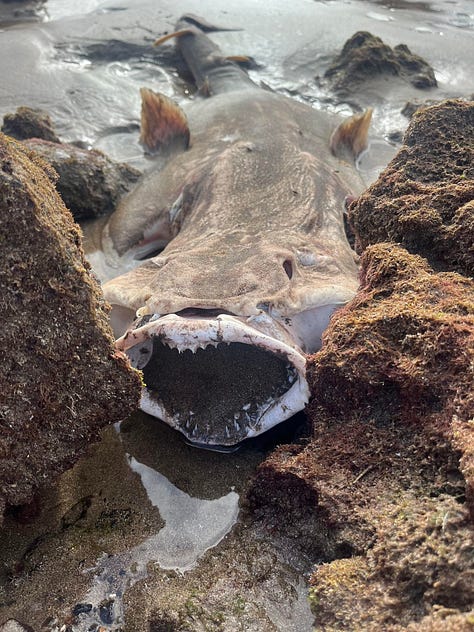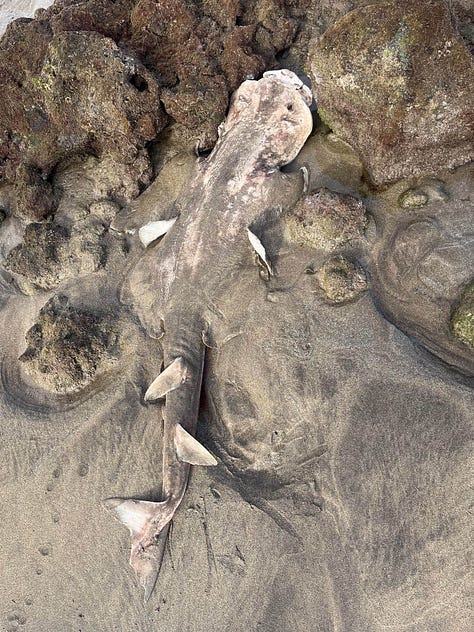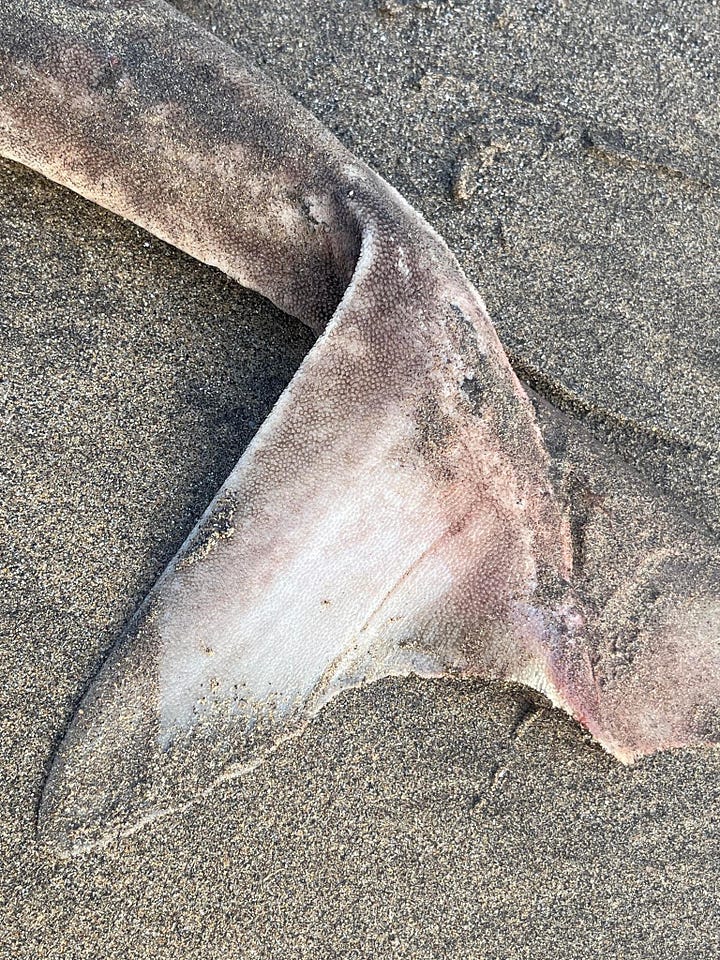The strange sea beast with angel wings that’s ‘as big as a five-year-old’
Fia Clark and her family found the creature on holiday, but it's true identity reveals a sad story.
A MYSTERIOUS sea beast with angel-like wings that’s as big as a five-year-old has been found baring its sharp teeth by a Brit on holiday.
Fia Clark, from Salisbury, Wiltshire, found the creature on Tuesday while walking on the beach in Lanzarote with her family.
“It’s was washed up on Matagorda beach, Puerto del Carmen,” said Fia, 37.
“We are on holiday here and walk down to the beach every morning.
“My two daughters were playing and exploring the rocks, and came across it when the tide was out.
“It was around four feet long and around 12 inches wide. It was a similar size to my five-year-old daughter.
“It was grey and white and blended in with the dark grey sand and rocks. There were no wounds that we could see – it looked pretty peaceful.”
In Fia’s photos, the creature has sharp teeth set in a wide, flat head, giving way to a ray-like body flanked by angelic wings, before terminating in a shark-like tail.
Intrigued by the discovery, the teaching assistant shared her photos on Facebook in the hopes of identifying the remains.
One person joked it was the Loch Ness Monster, but the truth is a sadder story.
Marine biologist Inaki Javier Tomey Roca, who grew up on the Spanish island, said it was an endangered species.
He said: “What you see in the picture is the carcass from an angelshark or ‘angelote’ as locals call them.
“It is a threatened species and categorized as critically endangered species in the IUCN red list.”
Rob Deaville of the UK Cetacean Strandings Investigation Programme confirmed the identification.





Once abundant in western Europe, the species has been badly affected by commercial fishing.
It used to be common around Britain and Ireland, but it’s now thought to be extinct in the North Sea, and a 2013 article estimated there were fewer than a dozen left in Irish waters.
They’re also thought to be extinct in the northern Mediterranean, though some still are found off north Africa and around the Canary Islands.
They’re generally not aggressive to humans, but can deliver a severe bite if disturbed.
For Fia, it was a sad revelation.
She said: “At first it felt quite exciting to find it on the beach as we love to discover wildlife.
“But the more we looked at it, the more sad we felt.
“We have come across a lot of washed up marine life on our travels, but nothing of this size, which for some reason made it even more upsetting.”








